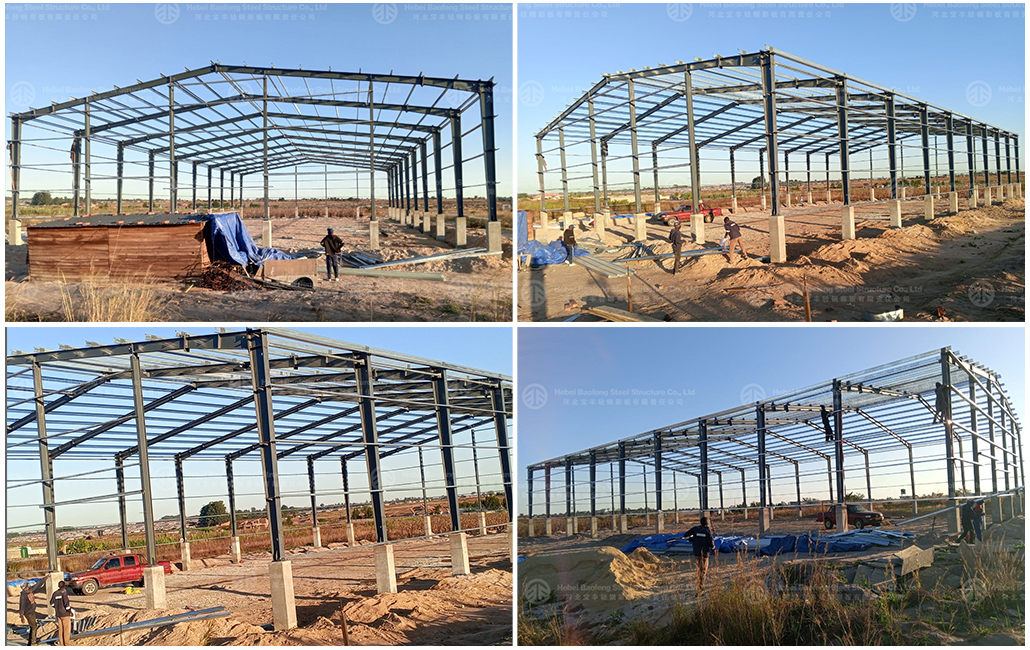
What are the concrete quality points of steel structure engineering?
The quality control of steel structure engineering is crucial to ensuring the safety, durability, and performance of the structure. Below are the key quality control points for steel structure engineering, categorized by stages:
1. Material Quality Control
Steel Materials:
Verify the quality certificates (e.g., material test reports, chemical composition, and mechanical properties).
Inspect for surface defects (cracks, delamination, rust, etc.).
Ensure compliance with design requirements (e.g., steel grade, strength, and toughness).
Welding Materials:
Check the quality of welding rods, wires, fluxes, and shielding gases.
Ensure compatibility with the base metal.
High-Strength Bolts:
Verify the grade, specification, and performance (e.g., tensile strength, hardness).
Inspect for rust, deformation, or damage.
Anti-Corrosion & Fireproof Coatings:
Ensure material quality meets standards (e.g., adhesion, thickness, durability).
2. Fabrication Quality Control
Cutting & Machining:
Dimensional accuracy (length, width, hole positions).
Edge smoothness (no cracks or burrs).
Welding Process:
Weld appearance (no cracks, undercuts, porosity, or slag inclusions).
Non-destructive testing (UT, RT, MT, PT) for critical welds.
Preheating and interpass temperature control for thick plates.
Bolt Hole Processing:
Hole diameter, spacing, and alignment must meet design requirements.
Assembly Accuracy:
Check component dimensions, straightness, and flatness.
Ensure proper fit-up before welding or bolting.
3. Installation Quality Control
Foundation & Support:
Verify anchor bolt positions, elevations, and embedment depth.
Ensure grouting strength and compaction.
Erection Process:
Alignment and verticality of columns and beams.
Proper tightening sequence for high-strength bolts (initial and final torque checks).
Temporary bracing to prevent deformation during installation.
Welding & Bolt Connections On-Site:
Field welding must follow approved procedures (preheat, weld quality).
Bolt pretension inspection (using torque wrench or tension calibrator).
Deformation Monitoring:
Real-time measurement of deflection, camber, and settlement.
4. Anti-Corrosion & Fireproofing Quality Control
Surface Treatment:
Proper rust removal (Sa2.5 or higher for blast cleaning).
Dust and oil removal before painting.
Coating Application:
Dry film thickness (DFT) inspection (meets design specifications).
Adhesion testing (cross-cut or pull-off test).
Fireproof Coating:
Thickness and uniformity (per fire resistance rating).
No cracking or peeling after curing.
5. Inspection & Testing
Non-Destructive Testing (NDT):
Ultrasonic (UT), Radiographic (RT), Magnetic Particle (MT), or Dye Penetrant (PT) testing for welds.
Load Testing:
For special structures (e.g., bridges, large-span roofs), conduct static/dynamic load tests.
Final Acceptance:
Check overall dimensions, deformation, and connection integrity.
6. Documentation & Compliance
Ensure all quality records (material certs, weld logs, inspection reports) are complete.
Compliance with national/international standards (e.g., GB 50205, AWS D1.1, EN 1090, AISC).
Conclusion
Quality control in steel structure engineering requires strict supervision at every stage—from material procurement to fabrication, installation, and final inspection. Proper execution ensures structural safety, longevity, and compliance with design specifications.

Kategori
blog terbaru
© hak cipta: 2026 Hebei Baofeng Steel Structure CO.,LTD Hak cipta terpelihara.

IPv6 rangkaian disokong